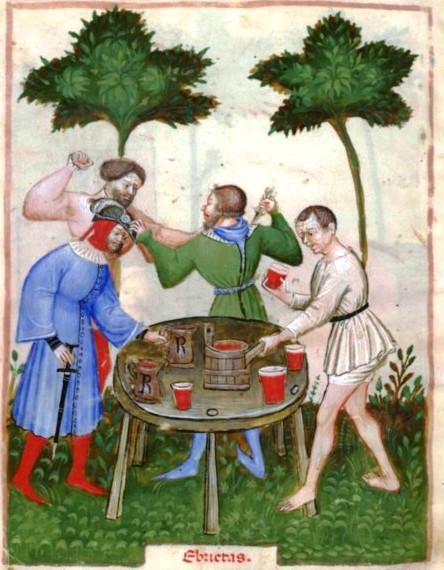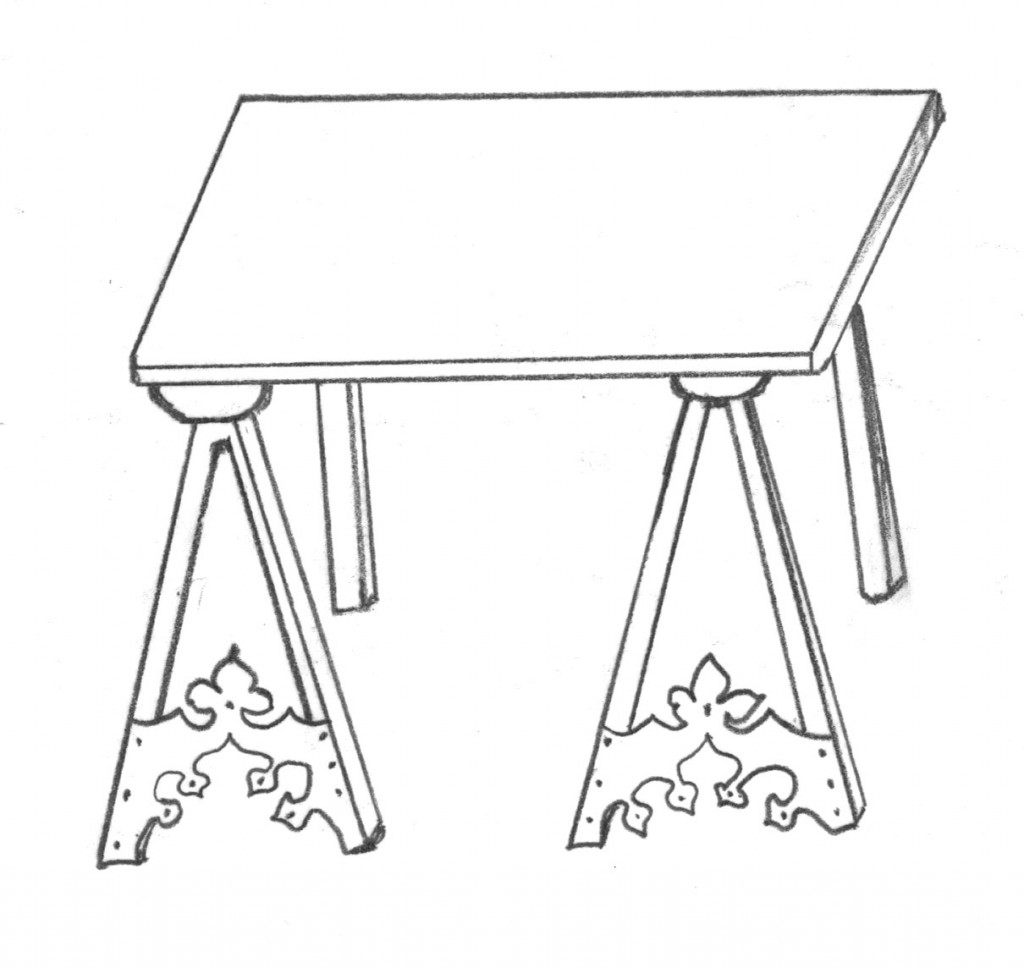We may receive a commission when you use our affiliate links. However, this does not impact our recommendations.
In our minds, we all have a good idea of what a typical chair, table, stool, desk or workbench looks like and how these pieces are built. But today I’d like to take you on a brief trip to the Middle Ages when furniture was built using different principles.
Oh sure, tables and chairs still have legs, but the number of legs and how the pieces are assembled is – if you look close – quite a departure from what we do today.
For the last five years, I’ve been studying “staked furniture,” which is a type of furniture made with a conical, back-wedged mortise-and-tenon joint. Today this joint is used in some chairs, but in the 14th century it was used for a wide variety of pieces.
Because Value City Furniture and Ikea didn’t issue catalogs in the Middle Ages, I’ve been relying on hundreds of images from illuminated manuscripts. One of my favorite sources has been the “Tacuinum Sanitatis,” a widely reprinted book on health and food in the Middle Ages that curiously spanned both Eastern and Western cultures.
The “Tacuinum Sanitatis” is filled with images of household and work furniture. And if you were breezing through the book you might not spot the oddities. Rather than spoil the discovery for you, I encourage you to visit this fantastic board on Pinterest that is maintained by Henk T. Jong. Here you will find hundreds of images from many different editions.
Take a close look at the furniture and think: How did they build that?
I’m in the middle of building two dining tables from the “Tacuinum Sanitatis” and it has been a very odd experience. So odd that I haven’t been blogging about it because I’m not ready to answer the inevitable flood of questions (and criticisms) from readers.
By the way, if this sort of weirdness interests you, I’m giving a talk on it at Woodworking in America this fall in Kansas City, Mo. Read more details on the fantastic lineup here. Details on the event itself are at the Woodworking in America site.
— Christopher Schwarz
Here are some supplies and tools we find essential in our everyday work around the shop. We may receive a commission from sales referred by our links; however, we have carefully selected these products for their usefulness and quality.











Chris,
The table in the brawl has 5 legs, how can that be suited to uneven ground??
Even so, your research has opened yet another door for my curiosity to explore as I add to my choices for creating pieces!!
Top stuff
Jennie here
The table sketched sits upon two three legged trestles. that are only decorated in the Hall. In Medieval images it seems to occur frequently in dining scenes. Apparently break down furniture was often used in the multi purpose Great Hall. That explains the trestles. The three legs are a nifty solution. The diners sit on one side of the table, the side where each trestle has one comfortable leg. The table was served from the other side where the trestle’s two legs do not interfere. Also the three legged trestles will sit firmly on an uneven wood or stone floor. If a leaning trestle did not meet the flat table, I suspect they placed the Medieval version of the folded matchbook between the two. I have two three legged trestles around the house. I made them to see if they worked. I got the idea from the Shakers who used them. Not very handy for today’s table sat upon on all four sides. I used them for a book table against a wall with the single legs in the room. I bet waiters today would like three legged trestle one sided tables. Today they serve from behind the patron. (Notice the word “patron.”) I tell you that is tricky business. Chris? What are you going to do with your three legged trestles?
There’s two guys fighting in the back ground, red cups all over the table, a keg, and guys wearing toga related garb. The middle ages were a frat based culture!
It is St. Patrick’s Day, and I’m reading this post after taking a half day off work and spending a couple hours watching folk music and Irish Step Dancing at a local Irish pub, but looking at the first few dozen photos, was it common to put the joinery into boards that ran underneath the tables, rather than the tables themselves?
I could imagine some advantage to this, in the interest of longevity. Once the top saw too much abuse you could replace it, and re-use the legs/joinery (saving on the amount of skilled labor necessary).
Or that could be the Guinness talking. In some photos it is clear that the joinery goes into the surface proper that we see. Other places we see clearly that the legs are attached to a piece that runs underneath the surface of the table.
Are they really drinking out of red Solo cups?
Ah, the early flip cup table. I have a great idea for college furniture. Thanks Chris.